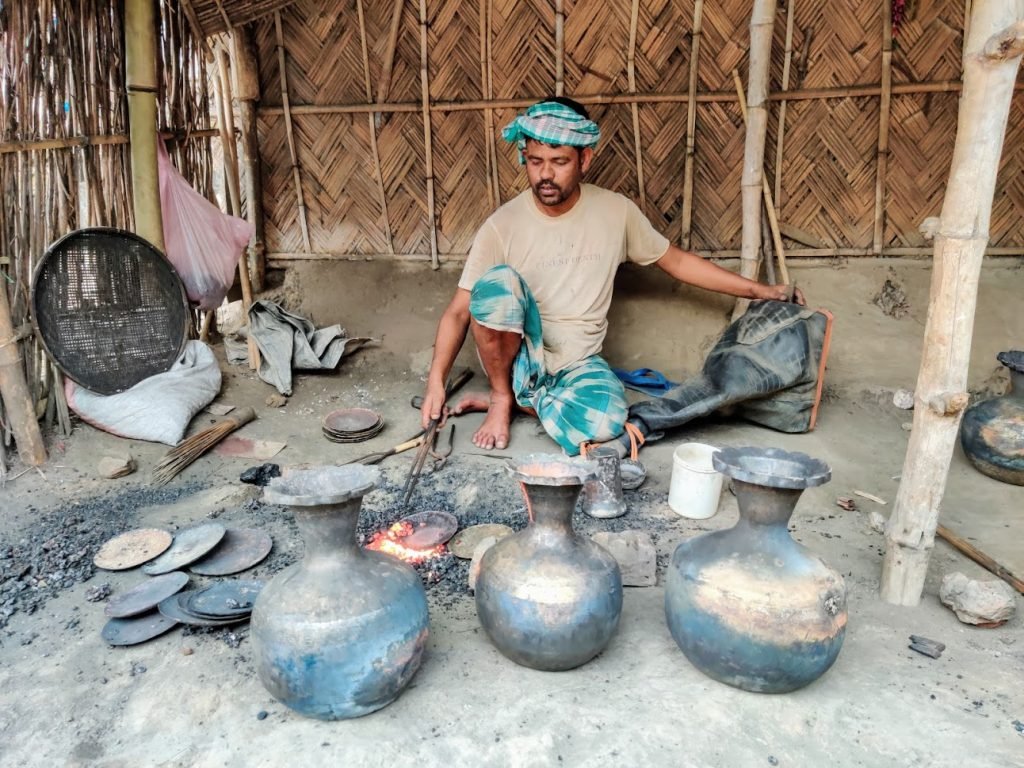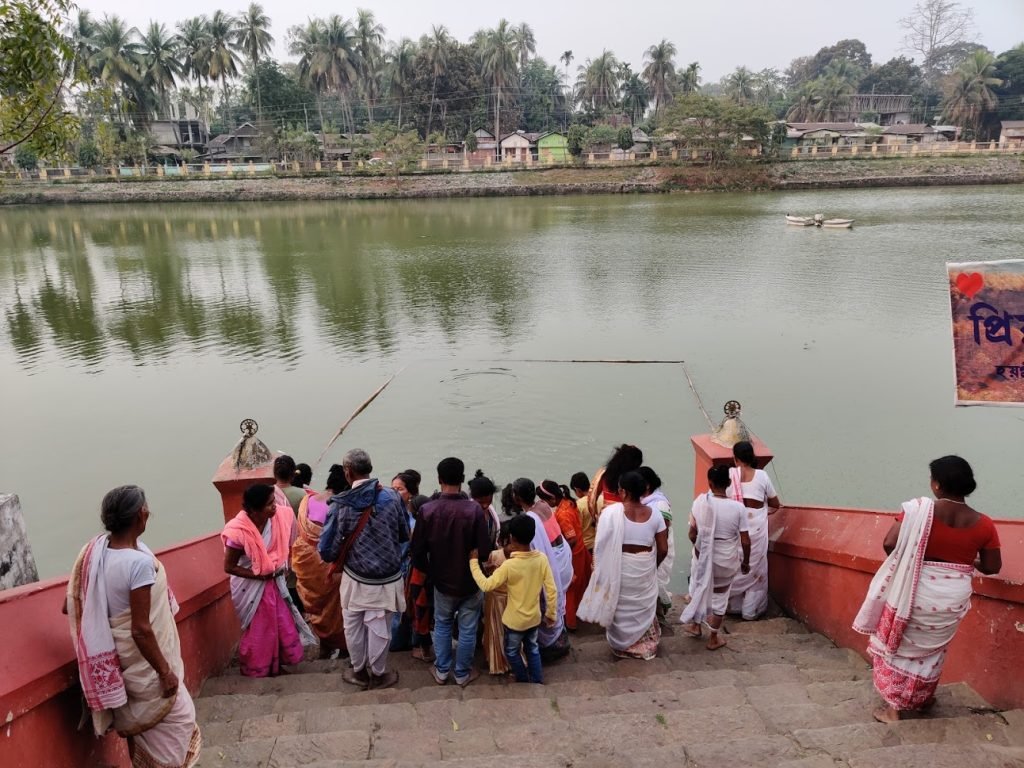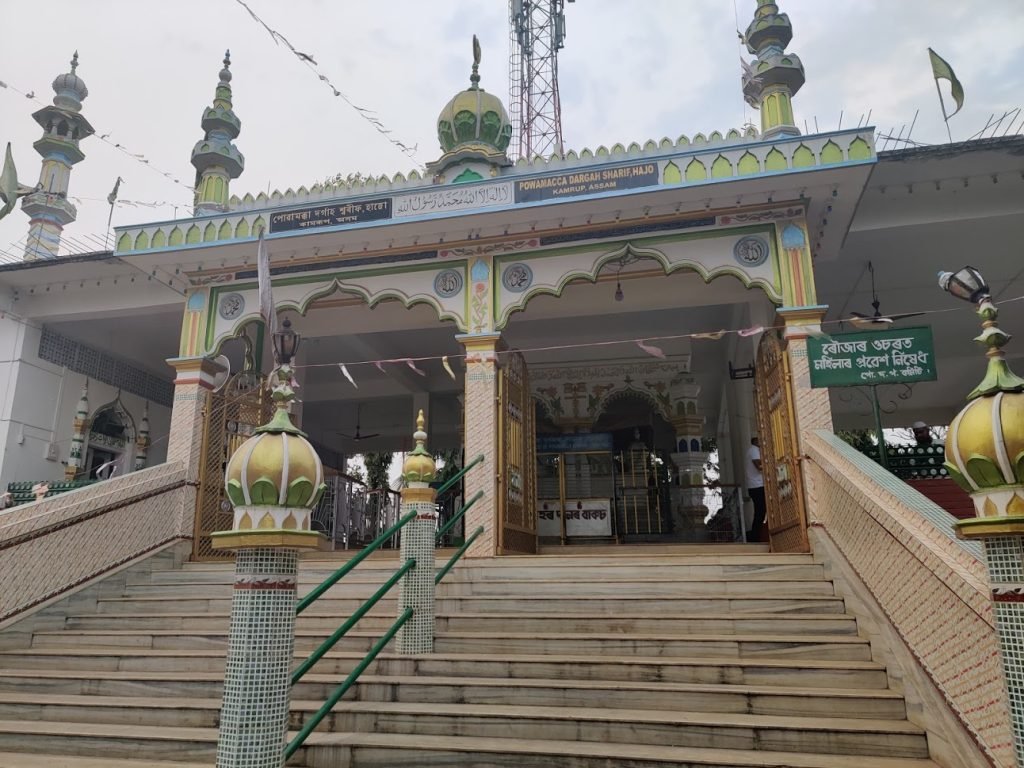About 35 km north-west of Guwahati, across River Brahmaputra, Hajo is by far one of Assam’s most interesting and significant destinations.
Hajo known as the Triveni Sangam of Hinduism, Islam and Buddhism, Hajo is best known for its two hilltop religious shrines – Poa Mecca, a centre of pilgrimage for Muslims on Garudachal hill and the Hayagriva-Madhava temple dating back to 6-7th century and dedicated to Lord Vishnu on Manikunta hill (present structure – 1583). The latter, with caparisoned elephants sculpted along its plinth, is also considered sacred by Buddhists, with some claiming that Lord Buddha attained Nirvana at this site.Significantly, Poa-Mecca’s khanqah has been built over sacred soil that was brought by a Iraqi preacher from Mecca, and the reason why offering prayers is believed to confer a quarter – poa meaning one-fourth – of piety obtained from a pilgrimage to Mecca itself.


Such being its spiritual quotient, not surprisingly, Hajo is a melting pot of faith and faithfulness. Home to many other religious shrines, including Kedareswara Temple & Dhoparguri Sattra – an exemplar of religious harmony –the best instance of which can be found in the harmonious living of various castes and communities in the neighbourhood around the lanes of Hayagriva-Madhava temple gate. Here, Brahmins and Sudras reside along opposite sides of the lane with Muslim brass-metal craftsmen bringing up the rear!


The temple’s pond is also a rich habitat of various species of fish and black soft-shell turtles – with 13 species of turtles reported living in the pond as of date. It is perhaps a stroke of serendipity that turtles are believed to be an incarnation of Lord Vishnu, the presiding deity of the temple. Today, the black soft-shell turtle species figures in the IUCN Red List as ‘extinct wild’ (Source: Help Earth), thanks in great measure to their loving caretaker Shri Pranab Malakar.
